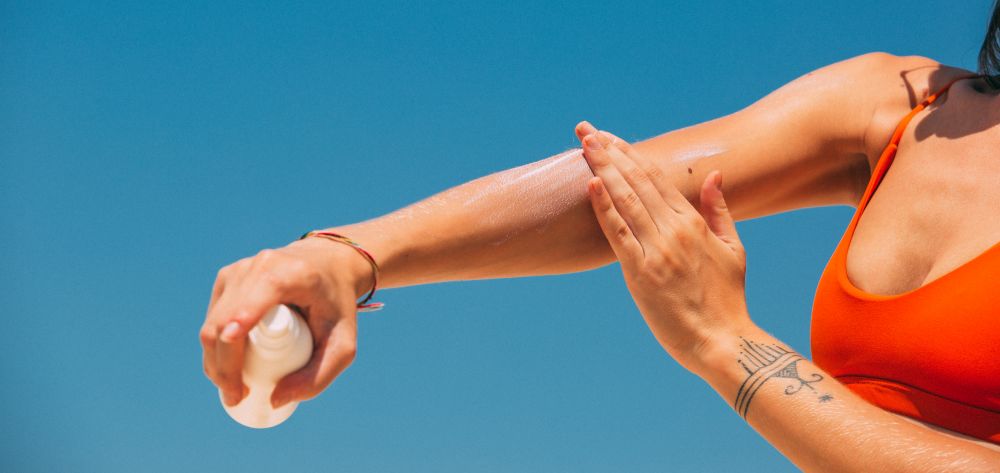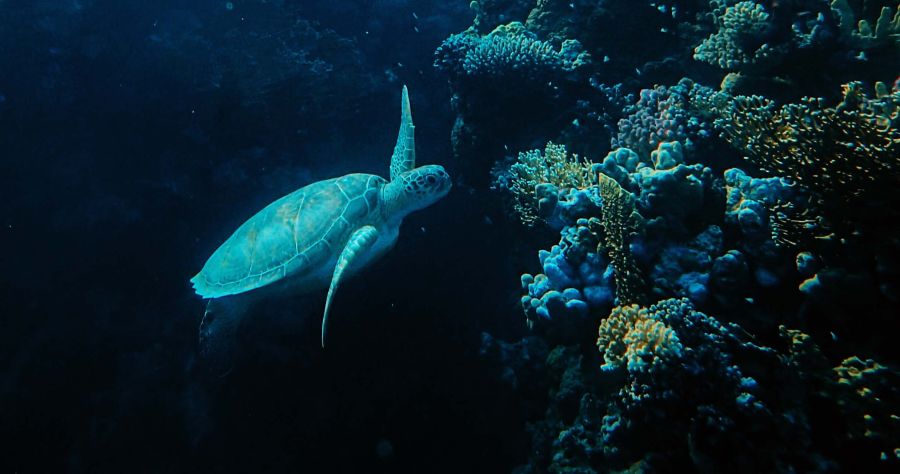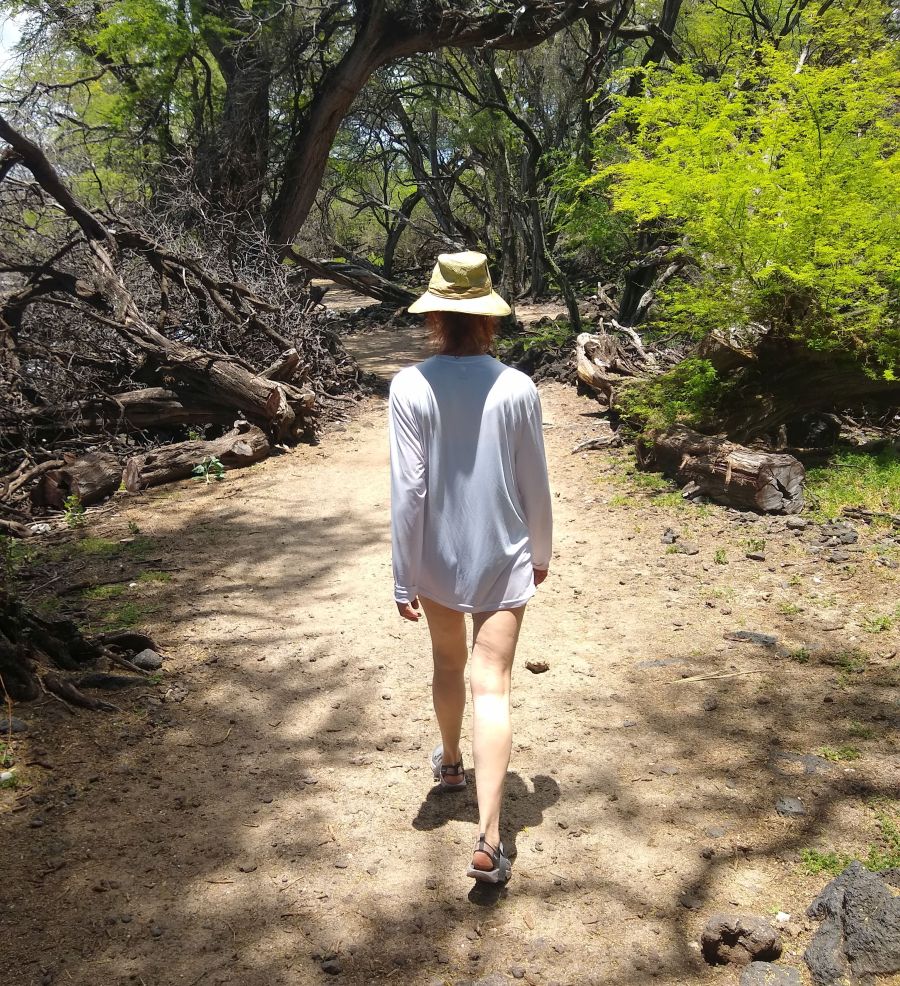
Safe Sunscreens for Hawaii and You: A Closer Look At Sun Protection
Heading to Hawaii for a much needed vacation? You will need to bring a safe sunscreen or to buy it locally to protect yourself from sunburn. Take note: Hawaii’s new sunscreen law bans sunscreens containing oxybenzone and octinoxate due to the bleaching effect of those ingredients on coral reefs. You can no longer buy sunscreens with oxybenzone and octinoxate in Hawaii, and many sunscreen brands re-formulated their sunscreens to replace oxybenzone and octinoxate with other ingredients.
While it’s very important to protect marine life, our primary reason for buying sunscreen is to protect ourselves from sun damage. Are newly formulated reef-safe sunscreens effective? Are they safe for humans? With so many brands available on the market, which ones to choose? Will any effective sunscreen protect both marine life and human health?
Simply picking a reef-friendly sunscreen might not be enough to protect you from the sun. The damage from sunscreen usage can be three-prong. First, it may not protect you properly because it is inefficient or applied improperly. Second, it may contain ingredients that can harm your own health. Finally, as mentioned above, these same ingredients may also be harmful to the environment.
Ideally, sun protection requires the proper application of a sunscreen that is safe for your use and for the environment while protecting you from the broader spectrum of UV rays. You can fuller reap its benefits by supplementing its use with other sun protection techniques. Below we discuss the full specifics of sun protection — so you can enjoy Hawaii without worrying about sun damage!
*Disclosure: This post contains affilite links to products that we research and recommend. If you use the links and buy somethings, we may earn a small commission at no cost to you. Thank you.
Sunscreen safety for both human and marine life
As mentioned earlier, Hawaii’s sunscreen law prohibits the use of two specific ingredients: oxybenzone and octinoxate. Aside from being proven to be harmful to marine life, the use of these ingredients are considered toxic for humans as well. Oxybenzone can irritate the eyes and cause skin allergies. Mounting evidence also points to it causing skin cancer.
The Environmental Working Group (EWG) lists both oxybenzone and octinoxate as endocrine disruptors. This means they can negatively affect reproduction in adults and trigger puberty in children by affecting the hormones produced and regulated by the thyroid. They can also cause insulin resistance syndrome that leads to diabetes.
Help both yourself and the environment by using the EWG database to check for these ingredients not just in your safe sunscreen, but your other cosmetic products as well. This is because products like your eye cream or moisturizer may also be using them. Adopting an attitude similar to “putting your oxygen mask on yourself first, then help others”, will automatically help keeping our planet’s corals safe.

Get protection from both UVA and UVB rays
Everyone knows that sunscreen protects your skin from sunburns from the sun’s UV rays. However, it’s more complicated than that: like other forms of light, UV rays exist as a spectrum of different wave lengths. The rays that reach the earth’s surface are called UVA and UVB rays.
They have different effects on our skin. UVB rays affect the surface of the skin, and their damage is visible as sunburn. UVA rays can penetrate deep beneath our skin’s surface, and while their damage is not immediately visible, they can trigger premature aging such as wrinkles. Prolonged exposure to both UVA and UVB rays can cause skin cancer, which is why it’s so important to wear sunscreen.
Sunscreen vs. sunblock
There are two types of active ingredients in sunscreen that protect your skin from UV rays.
The first type is chemical filters, like oxybenzone (banned), octinoxate (banned), avobenzone, octisalate, octocrylene, homosalate and some others. Those chemical ingredients penetrate the top layers of the skin and absorb damaging UV rays like a sponge. Most protect from UVB rays but are not as efficient against UVA, that cause deeper damage. The sunscreens that use only chemical filters are simply called sunscreens.
The second type of active ingredients is mineral filters (a.k.a. physical filters). There are only two mineral filters that are approved by FDA – zinc oxide and titanium dioxide. They are not absorbed by the skin, but remain on top and reflect light like a mirror. Because mineral filters physically block the light, those sunscreens that contain them are often called sunblocks.
In 2019 the FDA proposed a rule to update the regulation of sunscreens. Their proposed rule – Sunscreen Drug Products for Over-the-Counter Human Use – divides all sunscreens in three categories. Only zinc oxide and titanium dioxide made in into Category 1 – Generally Recognized As Safe and Effective (GRASE),
Both zinc oxide and titanium dioxide protect from both UVA and UVB rays, but in slightly different ways. Titanium dioxide is more effective at blocking UVB and short-wave UVA rays, while zinc oxide blocks both short and long UVA and UVB rays. Because those ingredients protect from both UVA and UVB rays, the sunblocks are also called broad-spectrum sunscreens.
Both zinc oxide and titanium dioxide use non-nano particles. These particles are large enough so as to not be absorbed into your skin and harm your health. In the same way, they don’t cause any lasting impact on the environment.
Note that not every broad-spectrum sunscreen is reef-safe or human-safe. A combination of unsafe chemical filters and safe mineral filters will produce an effective broad-spectrum sunscreen, that would be harmful to you and harmful to the corals. Choose your sunscreen wisely.
Some of our favorite safe sunscreens
Badger SPF 40 Sport Unscented Sunscreen
EltaMD Broad-Spectrum SPF 41 Tinted Sunscreen
Does higher SPF mean better sun protection?
You might be familiar with the abbreviation SPF, or sun protection factor. This refers to the amount of protection a sunscreen provides against UVB rays. For example, using sunscreen with SPF 30 means you’ll be exposed to 1 minute of UVB rays for every 30 minutes you spend in the sun. More effective sunscreens have higher SPF ratings, which can go up to 100. Different ratings also provide different levels of effectiveness, ranging from 93% for SPF 15 and 99% for SPF 100.
But SPF does not tell you how effective a sunscreen is against UVA rays. If your sunscreen is not marked as Broad Spectrum by the manufacturer, it means that it doesn’t block UVA from damaging your skin.
How much sunscreen to apply?
It’s important to apply sunscreen to parts of your body left exposed by clothes, like your face, ears, arms, and legs, 30 minutes before sun exposure. The Skin Cancer Foundation recommends two milligrams per square centimeter of skin. In plain English, this translates to a full shot glass or two tablespoons for your entire body — reserving a nickel-sized amount of product for the face alone.
Even if you’ve found a great safe sunscreen, it won’t be effective if you don’t apply it properly. First off, sunscreen should be applied every day. This is because UV rays can infiltrate through and even be enhanced by cloud cover — especially in Hawaii, which is closer to the equator.
Finally, don’t forget to reapply. Water, sand, and sweat all increase UV exposure by reflecting rays and washing off your sunscreen, so reapply after swimming or partaking in strenuous and sweat-inducing activities.
Don’t rely on safe sunscreen alone
A very simple solution to broad spectrum protection at the beach is to wear sun protection shirts, that have ultraviolet protection factor or UPF rating of 30 or higher. They tremendously reduce the body area to apply sunscreen. When wet, they also help to cool the body in addition to shielding you from both UVA and UVB rays.
You might also want to invest in a pair of 100% UV sunglasses and a sun hat. Check polarized sunglasses with a G-15 tint, that work especially well protecting your eyes in the bright Hawaii sun. Using these items won’t just supplement the protection provided by sunscreen, but can reduce your need to use it.

Check the UV levels when going out
When heading outdoors, it’s best to first determine the UV index in your area. This measures the strength of sunburn-inducing UV rays in a specific location and during a specific time of day. You can usually find it in the form of an hourly forecast available on your phone’s weather app. According to the US Environmental Protection Agency, UV protection is needed at index levels 3-7, and they recommend additional precautions at levels 8 and higher.
Hawaii often has a UV index of 7 upwards, even in the winter. If UV levels are too high, as is the case between the hours of 10 AM and 4 PM, consider staying indoors and avoiding direct sun exposure at the beach. If you absolutely have to be outdoors during this time, instead consider using additional sun protection gear.
Now you’re ready to enjoy Hawaii while staying healthy and protecting the corals! For some ideas on what to do on your trip, check out the following articles.
Best Turtle Snorkeling Locations in Hawaii
Best Things to Do on The Big Island







